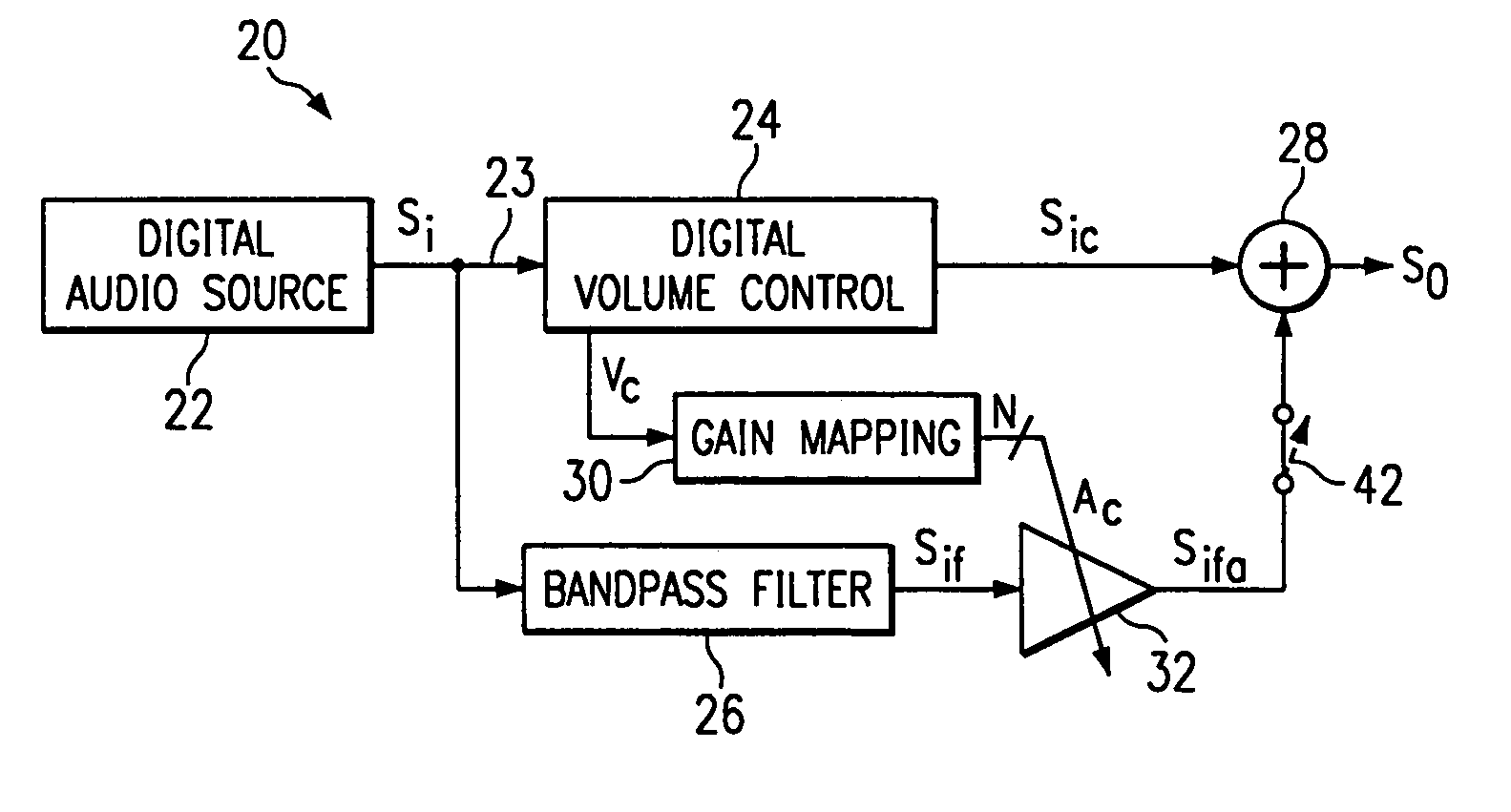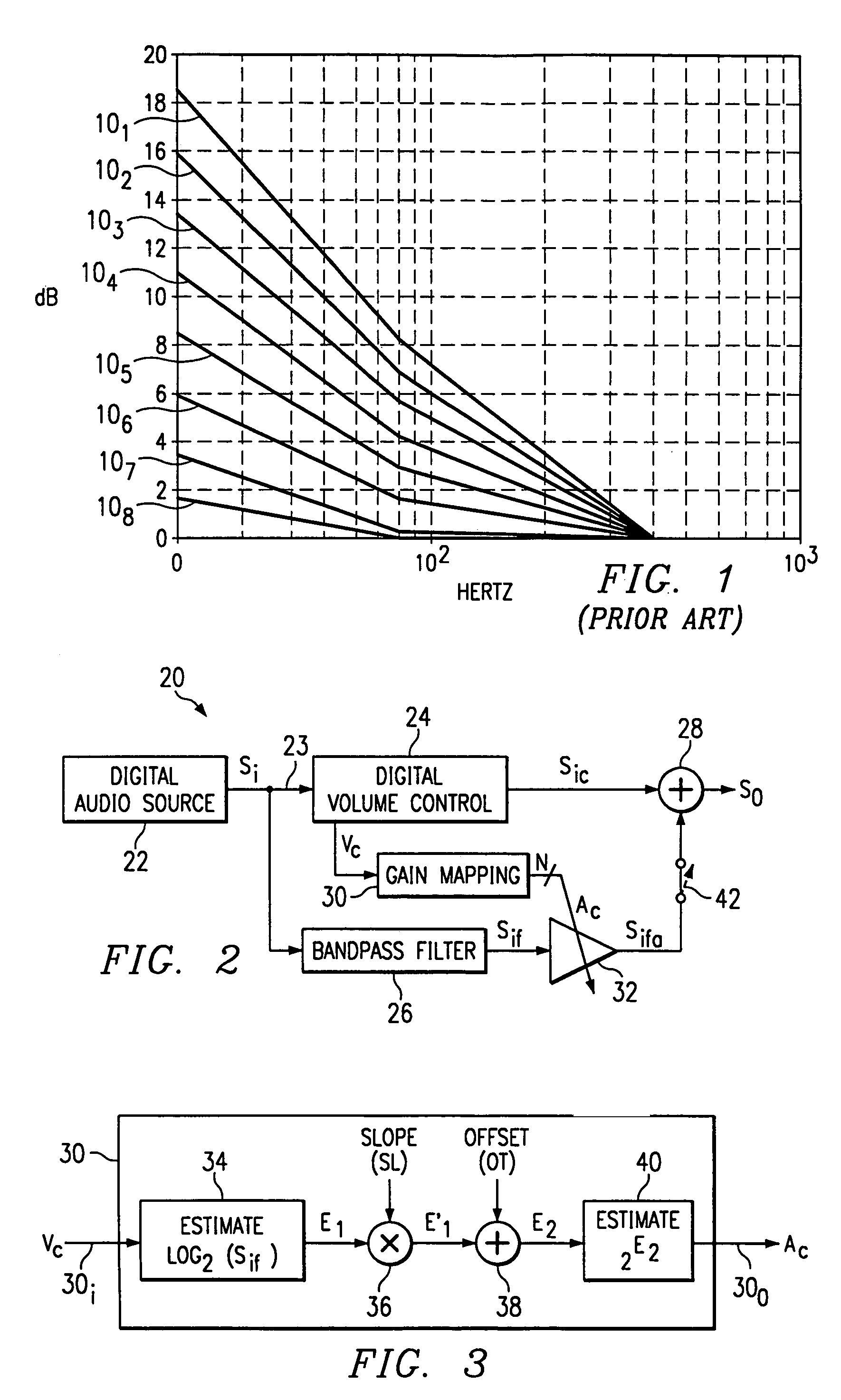Volume-responsive loudness compensation circuits, systems, and methods
a volume-responsive, compensation circuit technology, applied in the direction of frequency response correction, gain control, electrical transducers, etc., can solve the problems of physical limitations, complexity, cost, and limitations of audio systems and compensation systems, and may not work in a relatively inexpensive audio system that has poor (or no) response at such low frequencies
- Summary
- Abstract
- Description
- Claims
- Application Information
AI Technical Summary
Benefits of technology
Problems solved by technology
Method used
Image
Examples
Embodiment Construction
[0015]FIG. 1 was discussed above in the Background Of The Invention section of this document and the reader is assumed familiar with the details of that discussion.
[0016]FIG. 2 illustrates a block diagram of a differential loudness compensation circuit 20 according to the preferred embodiment. By way of introduction, a few observations are made. As a first observation, the blocks of FIG. 2 are by way of example to discuss the functionality and method of operation of circuit 20. Thus, the blocks of FIG. 2 may be combined or further subdivided by one skilled in the art unless stated to the contrary in this document. In addition, the blocks of FIG. 2 may be implemented by one skilled in the art using various different circuits or via a dedicated integral device or a signal processor. As a second observation, only a single channel is shown in FIG. 2 to simplify the illustration and following discussion, while one skilled in the art will appreciate that the inventive teachings of this do...
PUM
 Login to View More
Login to View More Abstract
Description
Claims
Application Information
 Login to View More
Login to View More - R&D
- Intellectual Property
- Life Sciences
- Materials
- Tech Scout
- Unparalleled Data Quality
- Higher Quality Content
- 60% Fewer Hallucinations
Browse by: Latest US Patents, China's latest patents, Technical Efficacy Thesaurus, Application Domain, Technology Topic, Popular Technical Reports.
© 2025 PatSnap. All rights reserved.Legal|Privacy policy|Modern Slavery Act Transparency Statement|Sitemap|About US| Contact US: help@patsnap.com


